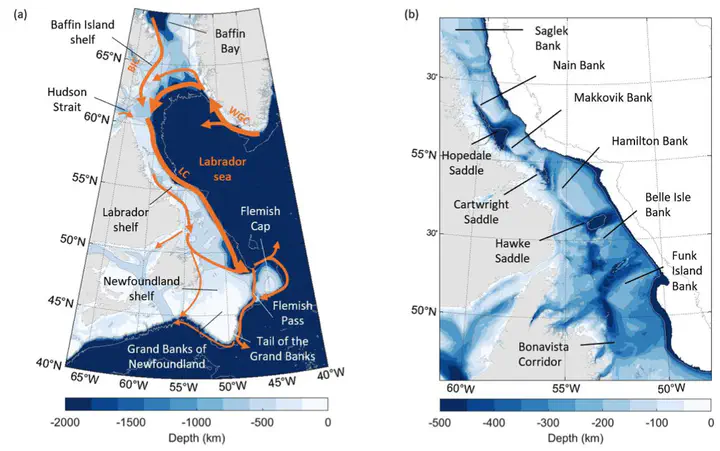Circulation of Baffin Bay and Hudson Bay waters on the Labrador Shelf and into the subpolar North Atlantic

Abstract
In the coming decades increasing amounts of freshwater are predicted to enter the subpolar North Atlantic from Greenland and the Arctic. If this additional freshwater reaches the regions where deep convection occurs, it could potentially dampen ventilation and the formation of deep waters. In this study we use a surface drifter dataset spanning the period 1990–2023 to investigate the pathways followed by waters originating from Davis Strait and Hudson Strait on the Labrador Shelf and into the interior subpolar North Atlantic. Recent drifter deployments in the region allow for an improved understanding of the circulation on the Labrador Shelf, in particular its northern part, where prior data was sparse. We show that waters originating from Davis and Hudson Strait remain on the shelf as they flow downstream, until they reach the Newfoundland Shelf. This confirms that very little exchange take place between the Labrador Shelf and interior Labrador Sea. Decomposing the Labrador Shelf into five regions, we further describe typical pathways for these waters and show that extensive exchanges take place between the coastal and shelfbreak branches of the Labrador Current. Our results suggest that if increasing amounts of freshwater reach the Labrador Shelf, it would not directly affect the Labrador Sea convection region; instead, it would lead to the formation a salinity anomaly off the Grand Banks, which could then circulate around the subpolar North Atlantic.